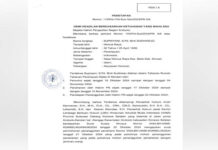It seems there might be a bit of confusion in your terminology. Allergies are typically immune responses to specific substances, and cold temperatures themselves are not allergens. However, some people may experience symptoms that they associate with cold exposure, and these symptoms could be related to various factors.
- Cold Urticaria (Cold Hives): Some individuals may develop hives or welts in response to cold exposure. This condition is known as cold urticaria. Symptoms can include red, itchy welts on the skin and can occur when the person is exposed to cold air, water, or objects. In severe cases, this reaction can lead to more serious symptoms such as difficulty breathing.
- Raynaud’s Disease: This is a condition that affects blood flow to certain parts of the body, usually the fingers and toes, in response to cold or stress. During an episode, the affected areas might turn white or blue and feel cold and numb until circulation improves, usually upon warming.
- Vasomotor Rhinitis: Exposure to cold air can also cause nasal symptoms in some people. Vasomotor rhinitis is a non-allergic, non-infectious form of rhinitis (inflammation of the nasal lining) that can be triggered by changes in temperature or humidity.
It’s important to differentiate between an allergy, which is an immune system response to a specific substance, and other reactions to cold temperatures. If you’re experiencing symptoms that you believe are related to cold exposure, it’s a good idea to consult with a healthcare professional for a proper diagnosis and guidance on managing your symptoms.
Cold Allergy Symptoms
It’s important to clarify that cold temperatures themselves do not typically cause allergies in the traditional sense. Allergies are immune responses to specific substances, such as pollen, dust mites, pet dander, or certain foods. However, some people may experience symptoms that they associate with exposure to cold conditions. Here are a few conditions or symptoms related to cold exposure:
- Cold Urticaria (Cold Hives): This condition can cause red, itchy welts or hives on the skin after exposure to cold air, water, or objects. The symptoms usually occur quickly after exposure and can vary in severity.
- Raynaud’s Disease: This condition affects blood flow, usually to the fingers and toes, in response to cold or stress. During an episode, affected areas might turn white or blue and feel cold and numb until circulation improves upon warming.
- Chilblains (Pernio): Prolonged exposure to cold and damp conditions, but not necessarily freezing temperatures, can lead to chilblains. This condition causes red, itchy, and swollen areas on the skin, usually on fingers and toes.
- Vasomotor Rhinitis: Exposure to cold air can lead to nasal symptoms, such as a runny or stuffy nose. Vasomotor rhinitis is a non-allergic form of rhinitis that can be triggered by changes in temperature or humidity.
If you are experiencing symptoms that you think are related to cold exposure, it’s essential to consult with a healthcare professional for a proper diagnosis. They can help determine the underlying cause of your symptoms and recommend appropriate treatments or preventive measures. If you suspect an allergy to something specific, an allergist can conduct tests to identify potential triggers.
Causes of Cold Allergies
“Cold allergies” is not a term commonly used in medical terminology. Allergies typically involve an immune system response to specific substances, such as pollen, dust mites, animal dander, or certain foods, but cold temperatures themselves are not allergens.
However, there are some conditions related to cold exposure that might cause allergic-like symptoms. Here are a few conditions that involve reactions to cold:
- Cold Urticaria (Cold Hives): This is a physical allergy where exposure to cold triggers the release of histamines, leading to hives, redness, and itching.
- Chilblains (Pernio): Prolonged exposure to cold and damp conditions can cause chilblains, which result in red, itchy, and swollen areas on the skin, usually on extremities like fingers and toes.
- Raynaud’s Disease: While not an allergy, Raynaud’s disease is a condition where blood vessels constrict excessively in response to cold or stress, leading to color changes in the skin, usually in the fingers and toes.
It’s important to note that these conditions are not true allergies in the sense of an immune system response to a foreign substance. If you are experiencing symptoms related to cold exposure, it’s recommended to consult with a healthcare professional to determine the specific cause and receive appropriate treatment. If you suspect allergies to other substances, an allergist can conduct tests to identify potential triggers.
Cold Allergy Medicine
If you are experiencing symptoms related to cold exposure or conditions such as cold urticaria (cold hives), chilblains, or vasomotor rhinitis, it’s essential to consult with a healthcare professional for an accurate diagnosis. The appropriate treatment will depend on the specific condition causing your symptoms. It’s important to note that standard allergy medications may not be effective for conditions like cold urticaria or chilblains.
- That said, if you are dealing with common cold symptoms, which are caused by viral infections, you might consider over-the-counter medications to alleviate your symptoms. These medications may include:
- Antihistamines: These can help relieve symptoms such as a runny nose and sneezing. Examples include cetirizine, loratadine, and diphenhydramine.
- Decongestants: These can help reduce nasal congestion. Pseudoephedrine and phenylephrine are common decongestants found in many cold medications.
- Pain relievers and Fever reducers: Acetaminophen (Tylenol) or nonsteroidal anti-inflammatory drugs (NSAIDs) like ibuprofen can help reduce pain and fever.
Cough suppressants and Expectorants: Depending on your specific symptoms, you might choose a medication that helps control coughing or loosens mucus. Dextromethorphan is a common cough suppressant, and guaifenesin is often used as an expectorant.
Always read and follow the instructions on the medication labels, and consult with a healthcare professional if you have any concerns or if your symptoms persist or worsen. Additionally, if you suspect that your symptoms are related to a more specific condition like cold urticaria, it’s crucial to seek professional medical advice for appropriate diagnosis and management.
How to Treat Cold Allergies
It’s important to clarify that cold temperatures themselves do not typically cause allergies. However, if you are experiencing symptoms that you associate with exposure to cold conditions, there are some steps you can take to manage these symptoms, depending on the specific condition. Here are general recommendations:
- Cold Urticaria (Cold Hives):
- Avoid Cold Exposure: Minimize exposure to cold air, water, and objects.
- Dress Appropriately: Wear warm clothing, especially in cold weather, to protect your skin.
- Antihistamines: Over-the-counter antihistamines like cetirizine, loratadine, or fexofenadine may help alleviate symptoms.
- Chilblains (Pernio):
- Keep Warm: Dress in layers and keep extremities warm.
- Avoid Rapid Warming: If your skin is cold, avoid rapid warming, as this can worsen symptoms.
- Topical Creams: Applying creams containing corticosteroids may help reduce inflammation and itching.
- Raynaud’s Disease:
- Keep Warm: Dress warmly, especially in cold weather, and use heated accessories like gloves.
- Manage Stress: Stress can trigger episodes, so stress management techniques may be helpful.
- Medications: In severe cases, medications that dilate blood vessels may be prescribed.
- Vasomotor Rhinitis:
- Avoid Triggers: Identify and avoid triggers, which may include exposure to cold air.
- Nasal Sprays: Over-the-counter nasal sprays or prescription nasal corticosteroids may help manage symptoms.
It’s crucial to consult with a healthcare professional for a proper diagnosis and personalized treatment plan. If you suspect an allergy to something specific, an allergist can conduct tests to identify potential triggers. If your symptoms are severe or persistent, seek medical attention promptly.
Always follow your healthcare provider’s advice and recommendations for treatment. These suggestions are general and may not be suitable for everyone or for all conditions.
Cold Allergy Prevention
Preventing reactions to cold-related conditions, such as cold urticaria, chilblains, or vasomotor rhinitis, involves taking measures to minimize exposure to cold and managing symptoms. Here are some general tips:
- Dress Appropriately:
- Wear warm clothing, including hats, gloves, scarves, and layers, to protect your skin from cold exposure.
- Avoid Rapid Temperature Changes:
- If you’re going from a warm environment to a cold one or vice versa, try to do so gradually to minimize the impact on your body.
- Keep Your Home Warm:
- Maintain a comfortable temperature in your home, especially during colder seasons.
- Use Cold-Weather Accessories:
- In extremely cold conditions, consider using heated accessories like electric gloves or socks.
- Limit Exposure to Cold Air or Water:
- Minimize time spent in cold environments, especially if you have known sensitivity to cold.
- Moisturize Your Skin:
- Cold air can be drying to the skin. Regularly apply moisturizer to help prevent dryness and cracking.
- Manage Stress:
- Stress can trigger or worsen some conditions. Practice stress-reducing techniques such as deep breathing, meditation, or yoga.
- Consult with a Healthcare Professional:
- If you have symptoms that you suspect are related to cold exposure, consult with a healthcare professional for a proper diagnosis and personalized advice.
It’s important to note that prevention strategies may vary depending on the specific condition causing your symptoms. Always follow the guidance of your healthcare provider and take any prescribed medications as directed.
If you suspect that your symptoms are related to an allergy or a specific trigger, consider consulting with an allergist who can perform tests to identify potential allergens and provide personalized recommendations for prevention and management.





























